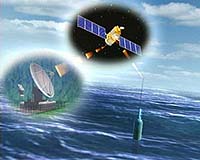| . |  |
. |
Canberra, Australia (SPX) Mar 17, 2010 Conservation managers need to take a long-term view when assessing the value of marine protected areas, according to a paper in the Proceedings of the National Academy of Sciences of the United States of America. The paper, 'Decadal trends in marine reserves reveal differential rates of change in direct and indirect effects', was written by an international team of authors led by Russ Babcock of the CSIRO Wealth from Oceans Flagship. It is the first paper to summarise the results from the most significant published long-term studies of temperate and tropical marine reserves. The team examined ecological data from coastal marine reserves in New Zealand, Australia, California, the Philippines and Kenya that had been in place for 10 years or more and were monitored before and after protection. "As marine reserves gain favour worldwide, stakeholders want to know how rapidly changes will occur after protection, but the changes are sometimes surprising and difficult to predict," Dr Babcock says. "Our study suggests it will take decades to observe, predict, and validate the full implications of marine reserves because many of the processes we need to understand operate on these timescales." Dr Babcock says most studies to date have focused on the restoration of fished species (higher predators) without considering the cascading effects on prey such as small fish, invertebrates, algae and corals. "We found that while the direct effects of protection on fished species are rapid, initially occurring within five years, it takes 13 years on average to detect the indirect effects on the broader ecosystem. "For example, in temperate reef systems, the recovery of lobsters and large fish can increase predation on sea urchins, causing reduced grazing and recovery of kelp forests." A co-author of the paper, Neville Barrett of the Tasmanian Aquaculture and Fisheries Institute, says marine reserves show different timeframes for different types of recovery. "It takes a while for primary, secondary and tertiary effects to occur," Dr Barrett says. "In some areas we are still seeing changes 20, 30, and 40 years post-protection. "For a large predatory fish such as the blue groper which lives 70-80 years and grows to 1.5 metres, five years of protection is hardly anything. It's only grown 30-40 centimetres in that time. Then it can take another 20 or 30 years for the effects of protection to occur at the next level of the food chain. "A conservation manager may expect ecosystem recovery in five years, but in many places this won't be the case. It's not an inappropriate management plan; you might need to wait 20 years to see the full range of positive effects." Dr Babcock says long-term monitoring of marine reserves shows that populations of fished species are more stable in reserves than in fished areas. This makes them an important tool for conservation and restoration. "Protected areas also offer a valuable research tool, providing unique insights into the function of marine ecosystems and the effects of human activities."
Share This Article With Planet Earth
Related Links CSIRO Water News - Science, Technology and Politics
 Southern Ocean Winds Open Window To The Deep Sea
Southern Ocean Winds Open Window To The Deep SeaCanberra, Australia (SPX) Mar 17, 2010 Australian and US scientists have discovered how changes in winds blowing on the Southern Ocean drive variations in the depth of the surface layer of sea water responsible for regulating exchanges of heat and carbon dioxide between the ocean and the atmosphere. The researchers' findings - published on-line in Nature Geoscience - provide new insights into natural processes which have a majo ... read more |
|
| The content herein, unless otherwise known to be public domain, are Copyright 1995-2010 - SpaceDaily. AFP and UPI Wire Stories are copyright Agence France-Presse and United Press International. ESA Portal Reports are copyright European Space Agency. All NASA sourced material is public domain. Additional copyrights may apply in whole or part to other bona fide parties. Advertising does not imply endorsement,agreement or approval of any opinions, statements or information provided by SpaceDaily on any Web page published or hosted by SpaceDaily. Privacy Statement |